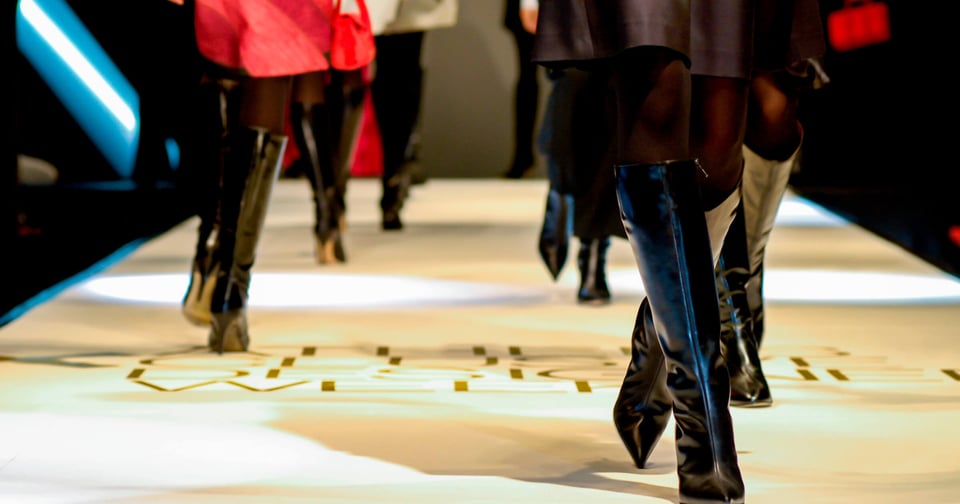Green Fashion Innovations That Are Changing the Industry the fashion industry, often seen as one of the most resource-intensive sectors, is experiencing a profound transformation driven by green fashion innovation. In recent years, a wave of new technologies, materials, and production methods has emerged, aimed at reducing the environmental impact of clothing and making the fashion world a more sustainable place.

The Rise of Sustainable Materials
At the heart of green fashion innovation lies the use of sustainable materials. The fashion industry has long relied on synthetic fabrics and materials that are harmful to the environment. However, as the demand for eco-friendly alternatives rises, a new generation of sustainable materials is emerging, transforming the fabric of fashion.
One of the most exciting developments is the rise of plant-based textiles. These materials require fewer pesticides, use less water, and have a lower environmental impact compared to their conventional counterparts. Hemp, for example, is a fast-growing plant that thrives without the need for synthetic fertilizers or pesticides, making it an excellent alternative to cotton.
Another significant innovation is the development of biofabricated materials. Companies are now creating fabrics from living organisms such as fungi, algae, and even bacteria.This sustainable leather alternative is durable, versatile, and biodegradable, offering a more eco-friendly alternative to animal-based leather.
Recycled fabrics also represent a major green fashion innovation. Recycled polyester, made from discarded plastic bottles and other plastic waste, is becoming increasingly popular. This material reduces the need for virgin polyester production, which is a major contributor to microplastic pollution. Similarly, recycled cotton, made from post-consumer textile waste, is helping to reduce the amount of clothing that ends up in landfills.
Circular Fashion: The Future of Consumption
As part of the push toward a more sustainable future, green fashion innovation is also revolutionizing how we consume fashion. Circular fashion, a model that emphasizes the reuse, recycling, and repurposing of clothing, is gaining significant traction. Unlike the traditional linear model of “take, make, dispose,” circular fashion promotes the idea that clothing can have multiple lives before it reaches the end of its useful life.
Brands that embrace circular fashion are designing garments with longevity in mind. Brands like Patagonia and Stella McCartney have been leaders in this space, offering repair services and recycling programs that encourage consumers to extend the life of their clothing.
One of the most groundbreaking elements of circular fashion is clothing rental and swapping services. With the rise of rental platforms like Rent the Runway and HURR Collective, consumers now have access to a rotating wardrobe without the need to buy new clothes. These services allow people to wear high-quality garments for special occasions or everyday wear without contributing to the overproduction of clothing.
3D Printing: Revolutionizing Garment Production
Another green fashion innovation that is set to change the way fashion is produced is 3D printing. This cutting-edge technology enables designers to create intricate garments directly from digital designs, reducing the need for fabric waste.
In addition to reducing waste, 3D printing can also significantly lower transportation emissions. By producing garments on demand and locally, brands can reduce the carbon footprint associated with shipping and transportation.
Several fashion brands have already begun incorporating 3D printing into their collections. Designers like Iris van Herpen and Danit Peleg have used the technology to create stunning, futuristic pieces that challenge the boundaries of what is possible in fashion.
Eco-Friendly Dyeing and Printing Methods
The dyeing process is one of the most environmentally damaging aspects of garment production, with traditional dyeing methods requiring large amounts of water and chemicals. However, green fashion innovation has led to the development of more sustainable dyeing and printing techniques that reduce water usage and eliminate toxic chemicals.
Waterless dyeing technologies are gaining popularity in the fashion industry. One such technique is the use of supercritical carbon dioxide, which uses carbon dioxide in its gas state to dissolve dye without the need for water. This method not only eliminates water consumption but also reduces the amount of chemicals needed for the dyeing process.
Digital printing is also becoming a more eco-friendly alternative to traditional screen printing. This method reduces waste because it only uses the amount of dye required for each design, unlike traditional screen printing, which requires large quantities of ink and can lead to overproduction.
Eco-friendly natural dyes are also gaining popularity. They are non-toxic, biodegradable, and require fewer resources to produce than synthetic dyes.
Zero-Waste Fashion: Cutting Down on Production Waste
Zero-waste fashion is another green fashion innovation that is reshaping the industry. The concept of zero waste in fashion is centered around designing garments in a way that eliminates waste during the production process. This approach requires designers to rethink their patterns and designs, ensuring that every piece of fabric is used efficiently.
This not only reduces textile waste but also challenges traditional notions of garment design.
Another innovative concept is the use of fabric scraps and upcycled materials to create new clothing. Brands like Re/Done and Patagonia’s Worn Wear program are giving pre-loved garments a second life by upcycling them into new, high-quality pieces. This reduces the demand for new raw materials and helps prevent clothing from ending up in landfills.
Conscious Consumerism and Fashion Transparency
As green fashion innovation takes hold, consumers are becoming more conscious of the environmental and social impacts of their purchasing decisions. In response to this shift, many brands are becoming more transparent about their production processes, sourcing materials, and labor practices. This transparency allows consumers to make informed choices and support brands that align with their values.
The rise of certifications such as Fair Trade, Global Organic Textile Standard (GOTS), and B Corp has made it easier for consumers to identify brands that prioritize sustainability and ethics. These certifications ensure that products meet specific environmental and social standards, providing consumers with the confidence that their purchases are making a positive impact.
The Role of Technology in Sustainable Fashion
Technology continues to play a pivotal role in driving green fashion innovation. From AI-driven design to supply chain management, technology is helping to streamline production processes and reduce the environmental footprint of fashion. For example, AI is being used to predict fashion trends, ensuring that garments are produced in more efficient quantities and reducing the risk of overproduction.
Blockchain technology is also gaining traction in the fashion industry. It can be used to track the journey of a garment from raw material to finished product, ensuring transparency and accountability in the supply chain. This technology can help consumers verify the sustainability of their clothing and promote ethical practices across the industry.
As we move toward a more sustainable future, green fashion innovation is playing a crucial role in transforming the fashion industry. From sustainable materials and circular fashion to cutting-edge technologies like 3D printing and AI, the fashion world is embracing a new era of responsibility and creativity. As these innovations continue to evolve, they will not only help reduce the environmental impact of fashion but will also pave the way for a more ethical and sustainable approach to clothing production and consumption. The future of fashion is green, and it’s one that is shaping a more sustainable world for generations to come.




